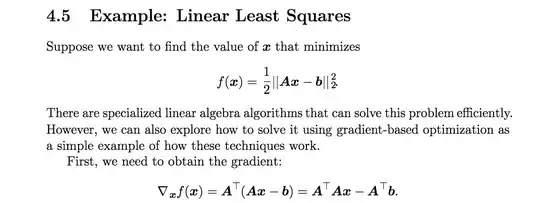You can use the chain rule for this problem. But for matrix/vector problems the intermediate derivatives required by the chain rule often involve complicated 3rd and 4th order tensors. So my preferred approach is to use successive change-of-variables within differential expressions.
Define the varible $y=Ax+b$. Then the norm (written in terms of the Frobenius product) and its differential are
$$\eqalign{
f &= \|y\|_F^2 \cr
&= y:y \cr\cr
df &= 2y:dy \cr
&= 2y:A\,dx \cr
&= 2A^Ty:dx \cr
}$$
Since $df=\big(\frac{\partial f}{\partial x}:dx\big),\,$ the gradient is
$$\eqalign{
\frac{\partial f}{\partial x} &= 2A^Ty \cr
}$$
Note that your initial impression is correct, i.e. with respect to $y$ the gradient is simply
$$\eqalign{
df &= 2y:dy \cr
\frac{\partial f}{\partial y} &= 2y \cr
}$$
